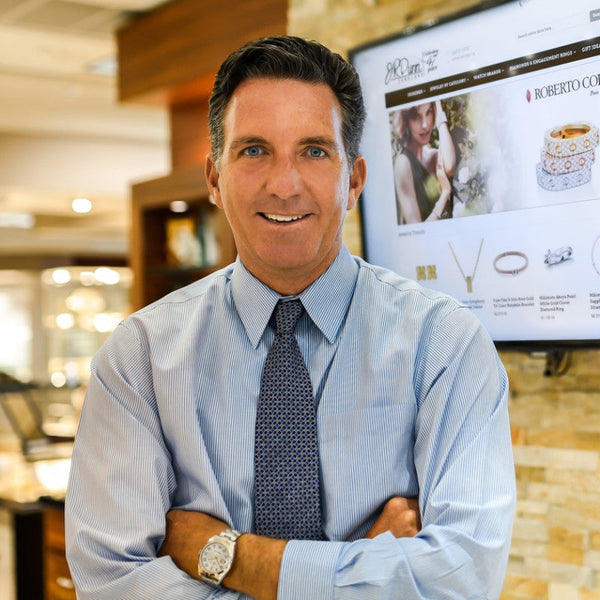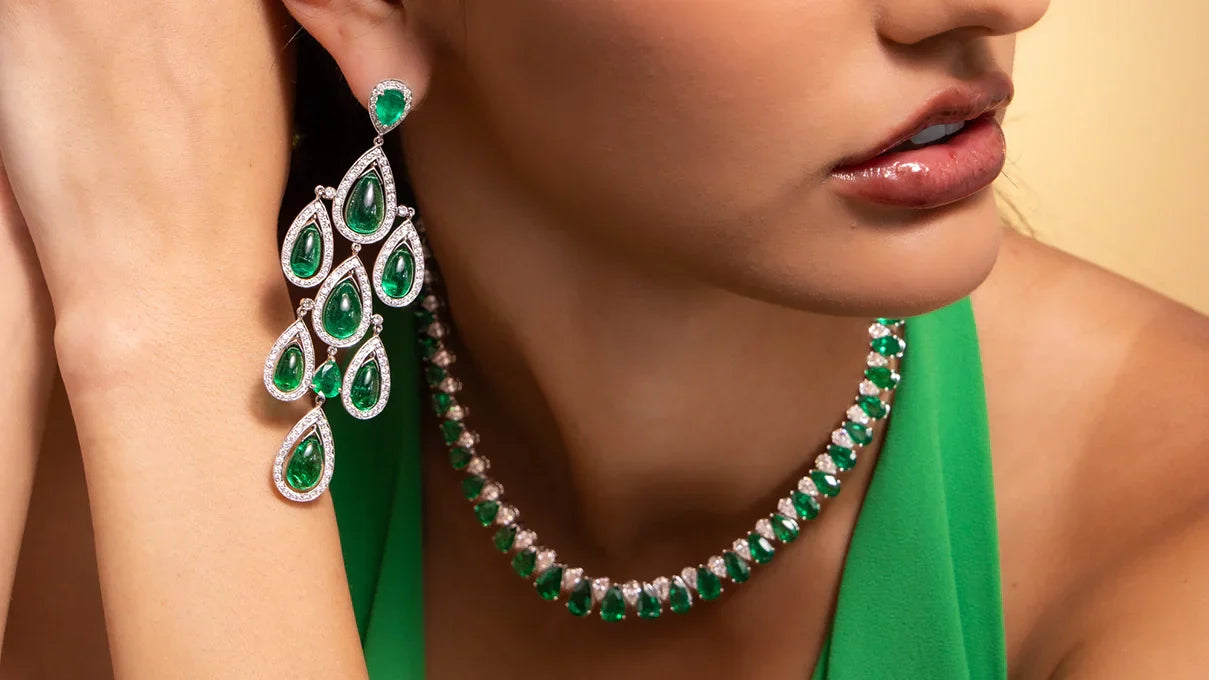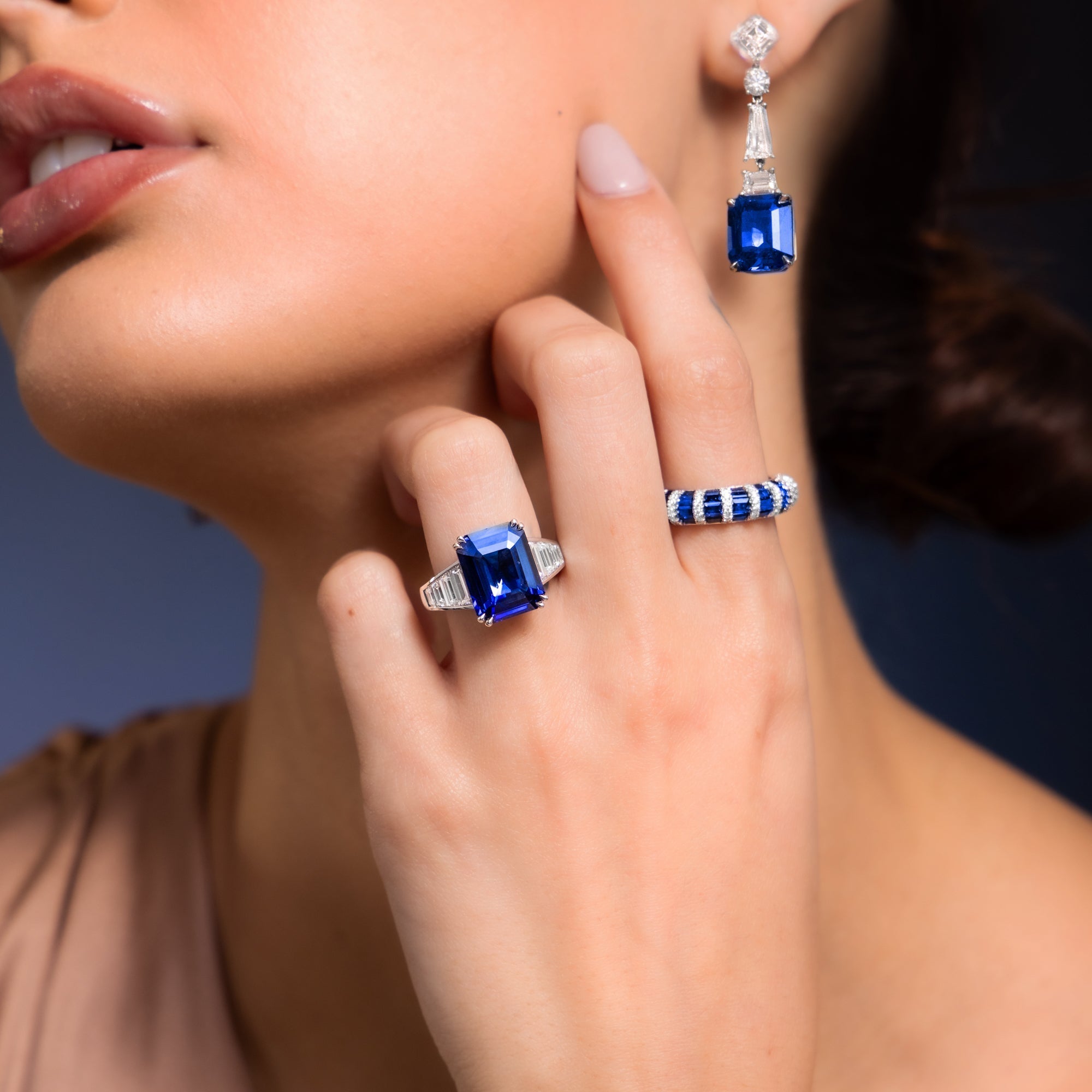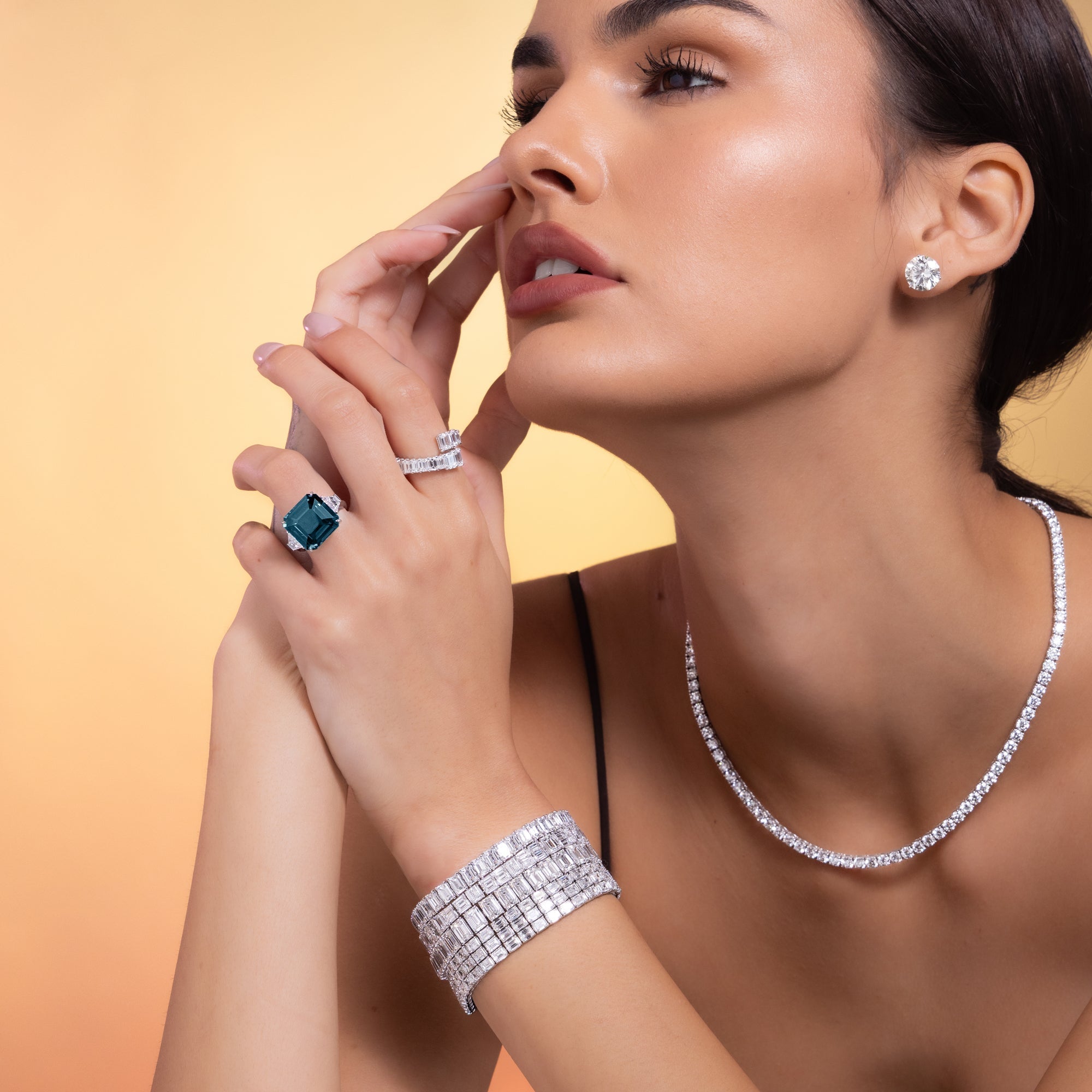
UPDATE 05/20/2025 ** An Evolving Perspective on Diamonds—From Your Jeweler
When we first wrote about lab-created vs. mined diamonds, we were optimistic that lab-grown diamonds would offer a clean environmentally responsible option at an accessible price. And in some ways, that position still resonates.
But the landscape has started to change.
Since 2019, prices for lab-grown diamonds have plummeted, and transparency in the supply chain has only gotten murkier. We’ve seen more factories emerge with little to no disclosure about who’s making these stones, under what conditions, or with what environmental impact. The very things that once made labs compelling—ethics, sustainability, traceability—are now often the biggest question marks. It’s hard to do things the most responsible way when the primary motivator of the producers is to compete on price and mass production.
Meanwhile, there’s been a quiet revolution in natural diamonds. Blockchain technology now allows us to trace a diamond from mine to market, showing not just where it came from, but the hands it passed through. Many of these diamonds are sourced from countries like Botswana and Namibia, where the industry supports education, healthcare, and infrastructure. These aren’t just luxury goods—they’re economic engines for communities.
We still carry lab-grown diamonds for now because some of our customers prefer them, and we respect that choice. But more than ever, we believe that the most meaningful diamond you can buy is one with a verified story behind it—a story rooted in nature, community, and transparency.
That’s why we launched Single Source™, our blockchain-traceable collection of responsibly source diamonds. We hope by talking about the supply chain it will inspire others to focus adding value by doing good. Because when it comes to what you wear to symbolize forever, we believe the origin and way it makes it to market should matter.
— Sean Dunn
Vice President, J.R. Dunn Jewelers
It is a great topic of conversation and one I wish more people would ask about. I had this subject come up literally a few days ago when a client was considering upgrading his wife's 3 carat natural diamond studs to 5 carat natural diamonds studs. The couple first asked about the price of the synthetics and if you could tell them apart. It ended being a great discussion that touched upon many things including the environment, human rights, value retention of diamonds and why we are interested in also carrying synthetic diamonds as a high end independent jeweler.
Can you tell the difference between natural diamonds and lab created diamonds?
It would be extremely difficult if not near impossible for any jeweler to visually identify the difference between natural and synthetic diamonds but there are sophisticated testers and labs like the GIA that can definitely tell the difference.
Do man-made diamonds cost much less?
Right now, lab created diamond are running about 30% less than natural diamonds. So one of the benefits is that you can get a bigger lab grown diamond for your money vs a natural mined diamond.
Why would you want to carry synthetic diamonds?
I think it is important to give the client the choice. Right now, people are shopping elsewhere who want a lab created diamond and I would love them to be J.R. Dunn customers. The goal is to find out what is important to the client. If they feel strongly that the environmental or social implications of a mined diamond are too much for them, then a manmade diamond is a great option. On the flip side, by carrying synthetics, you can also open the discussion that while mined diamond do have drawbacks, they also can do good for if the resource is managed properly. In some of the most impoverished nations on the continent of Africa, the diamond industry helps create jobs, empower women, fund education and health care. There is a website called diamondsdogood.com that highlights these initiatives. I think a lot of people would be pleasantly surprised to know that for every acre DeBeers mines, it devotes five acres to conservation, including natural habitats of endangered animals. At the end of the day clients should be able to buy the diamond that most aligns with their own personal beliefs and values, whether that is natural or synthetic.
Are natural diamonds a good investment?
A complex question we often get. I always recommend that people buy a diamond first a foremost to enjoy or give somebody joy while they wear it. There are many reasons why people buy a diamond like making a commitment, marking a certain milestone or having a tangible asset that can be passed to future generations as a family heirloom. These are all truly great reasons to buy one—but buying diamonds as an investment is whole different story. Even though I've sold clients some incredible diamonds over the past 20 years that I would pay 2 or 3 times price for right now to have back in my inventory, I still don't sell diamonds as an investment. The reason is not all diamonds have experienced the same appreciation and prices and liquidity do fluctuate. So, my view, since nobody has a crystal ball, is if you wear a diamond and it happens to appreciate over the longer term it is a real win win.
What about the long term value of lab grown diamonds?
Very tricky to predict, but I think as the technology improves they will get less expensive. This is probably the biggest area of concern and one of the main reasons we have not stocked man made diamonds as of yet. Natural diamonds have held their value extremely well over the course of time, while some people will say this is because of brilliant marketing or artificial manipulation of supply and so on. But the fact remains we don't hesitate to trade back natural diamonds we have sold for their full value toward a diamond of greater value. We are not sure we are going to be able to offer that same upgrade program on synthetics.
Do you think synthetics will make all diamonds cheap?
I don't think that will ever happen to natural diamonds because people have been able to make synthetic sapphires, lab created emeralds and many other precious gems for quite some time. The lab created stones became super inexpensive, but fine natural sapphire and emeralds really appreciated in value. There will always be those who want the mystique and allure of a natural gem—especially for a diamond. If you only want to buy one thinking it may appreciate or hold its value, I would definitely go for a natural diamond.
My thoughts after our discussion.
I want to be able to offer to show a synthetic diamond the next time a client asks. I think by giving them a choice you become a trusted advisor vs selling from one perspective. There are pros and cons for both manufactured diamonds and mined. Looking forward, I am excited about some of the recent initiatives being tested by GIA and DeBeers using blockchain to trace a diamonds journey. It is not enough to just say your diamond was responsibly sourced without specifics. What mined diamonds are missing is true tracking system to say to clients "your diamond came from this mine and this is what is going on in that community as a result. That is the type of market to mine transparency clients need to make a truly informed decision to go with lab grown diamonds or perhaps a mined diamond that tells a story!
Update May 2018: This piece reflected my mindset prior to the Las Vegas jewelry show where De Beers shocked the jewelry world by introducing their own line of lab grown diamond jewelry called Lightbox Jewelry. While I still feel the same about wanting to give clients a choice of a natural diamond or one that is lab grown, the low pricing of the Lightbox synthetic diamonds makes me really question the value of all synthetic diamonds in the long run. For now we will source lab grown diamonds at the client's request but we are taking a wait and see approach as a company before we'd invest in inventorying the higher priced synthetics.
Learn more about what Lightbox Jewelry means for lab created diamonds.
Update October 2019: J.R.Dunn now carries lab grown diamonds from Diamond Foundry. After careful deliberation and increasing client requests for lab growns we decided to partner with Diamond Foundry to be our primary supplier. They are made right here in the USA in a certified carbon neutral facility. This was an important factor us in making our decision because not all lab growns are as eco-friendly in terms of energy consumption like one might think. It takes a tremendous amount of energy for machines to replicate the high temperature and pressure necessary to cultivate a diamond. Here is link to an interesting read by the DPA (Diamond Producers Association) that puts mined diamonds at 69% less carbon emission per carat when compared to grown diamonds. This is why the solar technology Diamond Foundry is utilizing is important to us.
If your still undecided on between natural and synthetic diamonds the best thing to do is find a jeweler who will show you both so you can compare them side by side. Also, we have just put together and extensive list of FAQs on lab grown diamonds, including discussions of value and debating the not often mentioned socio-economic benefit of natural diamonds where they are a resource.
|
Meet the Author Sean Dunn is Vice President and Co-Owner of J.R. Dunn Jewelers. He earned his undergraduate degree in Business Administraton from the University of Florida and is a Graduate Gemologist of the Gemological Institute of America, GIA. |
 |




